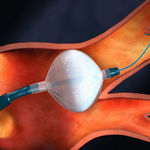Public Health

Sudden infant death syndrome (SIDS) is a diagnosis of exclusion, a general term for death during the first year of life that lacks an obvious cause.
Though it is a leading cause of death, its etiology is complex and remains largely unknown so assumptions are things like sleeping in a dangerous position, a general failure during the critical development period, or an unknown underlying biological vulnerability.
A cohort study consisted of Danish infants in Denmark (doi:10.1001/jamanetworkopen.2022.52724) between January 1, 1978, and December 31, 2016, including siblings of children who died…

Do you believe bacon causes diabetes? Cancer? If not, you may be an apostate in 2023, when we've just exited a period during which any skepticism of epidemiology(1) is met with the 2020s equivalent of 'Do you even Science, Bro?'
There is just one problem. Epidemiology isn't science. It is instead, in the best circumstance, a statistical effort to point scientists in the right direction. That is not the same thing, and in the worst circumstance it can be a weapon for social engineering, as epidemiologists placed within the International Agency for Research on Cancer to get classifications on…

Legal marijuana has meant a boost for government accountants, and ended the need for fake "medical" marijuana claims, but it is often still dangerous in both the short and long term.
A study in the Journal of the American Geriatrics Society used a trend analysis of data from the Department of Healthcare Access and Information and found a 1,808% relative increase in the rate of cannabis-related trips to the emergency department among California adults ages 65 and older from 2005 to 2019. In absolute terms cannabis-related emergency department visits went from just 366 in 2005 to 12,167 in…

Vegetables have had a lot of foodborne outbreak scandals, but two times since the 1980s they have also impacted meat in a big way.
Mad Cow disease in 1986 and Listeria in 2019 killed people. Mad Cow disease was due to poor quality control and a lack of coherent meat-chain understanding - the annual Burns Supper is coming up but you still can't buy haggis from Scotland - while more recent Listeria was just sloppy controls. Those can happen anywhere in the food chain but there may be ways to reduce the risk without making the perfect the enemy of the good.
A farm may tout it uses no…

This is a suggestion for a way to resolve questions such as:
How effective are the best FFP3 / N99 masks at breaking transmission of COVID?
However effective is eye protection when combined with the best masks?
How effective is ventilation with HEPA filters?
Informed expert opinion can't resolve these questions at present with opinions that range from almost no effect to highly effective. We have many studies but most are observational and from the range of expert opinion it is clear that so far they have had limiations and are not conclusive.
China is a country that has the motivation…

A new study says early intervention with cryoballoon catheter ablation (cryoablation) can halt disease progression and reduce risk of serious health impacts of atrial fibrillation(AF).
Atrial fibrillation affects about 3 percent of the population and is a common heart rhythm problem linked to increased risk of stroke and heart failure. Those are serious and a new analysis finds that there were fewer serious adverse outcomes with catheter cryoablation. Cryoablation involves guiding a small tube into the heart to kill problematic tissue with cold temperatures - it is usually reserved as a…

SAR, R0, these are all terms that became part of the pop culture lexicon during the COVID-19 pandemic. Unfortunately, because they were used in simplistic fashion they were more helpful for those engaged in wedge politics than the public.
Part of the problem can be laid at the feet of social media. COVID-19 was the third coronavirus pandemic of the last 17 years but it was the first to truly spread worldwide and have so much concern that the country where it originated created a campaign of disinformation, and even got the World Health Organisation to be complicit. And it all happened in real…

In 460 BC, Hippocrates described the earliest documented premenstrual syndrome, but it wasn't until 1931 that Dr. Robert Frank gave it a modern look with his paper on "premenstrual tension." In 1953 it was re-branded "premenstrual syndrome" because it covered so many symptoms. About 150.
By the early 1990s, women, and then men, were ridiculing the idea because no two women described the same thing. When a syndrome covers everything, it covers nothing, the clinical guidance notes.
A new paper argues that it does not matter if the experiences are heterogeneous, when 64 percent of women…

Sleep apnea is a condition where people experience partial or complete obstruction of their airways during sleep and stop breathing several times a night. It can can manifest as loud snoring, gasping, choking and daytime sleepiness and is believed to affect at least 7 percent of the population.
There is correlation between that and obesity, diabetes, cigarettes, and alcohol. There is no plausible biological mechanism for why those would cause sleep apnea, it is just correlation - epidemiologists look at rows of inputs and columns of effects - and that is the problem with a new paper claiming…

The good news for public health is that there have been
significant decreases in past-month cigarette smoking by young adults and recreational use of opioid medications in the past year compared to 10 years ago. The same goes with alcohol, which is still the most used substance but has seen declines in past-year, past-month, and daily drinking.
The bad news is that they are being replaced by marijuana and hallucinogens, and those increased significantly in 2021 compared to five and 10 years ago, reaching historic highs in this age group since 1988, according to the Monitoring the…